What ‘Design Development’ Means
One of those industry terms that architects and most designers know well—but may feel new to homeowners—design development deserves a clear explanation. After you complete existing conditions and finish schematic design, the next step is finalizing a plan, selecting a builder, and setting a budget. Then we enter design development, literally developing the design. We break it down three ways: by room, by product, and by budget.
Room by Room: Organizing Selections for Every Space
Every room has its own needs, and we sort selections accordingly. A foyer doesn’t require the same items as a kitchen, bath, or bedroom. For construction projects—new builds, renovations, or historic homes—we source lighting, plumbing fixtures, tile, wood flooring, molding, trim, windows, doors, cabinetry, counters, hardware, and paint.
If reading that feels exhausting, imagine the decision fatigue of an entire home. That’s why design development matters. We review space plans and choose every item room by room. Because we shop the market daily, we know the brands, vendors, and products that fit each client’s style, needs, and budget. We monitor lead times so every product aligns with the schedule.
Bathrooms show how detailed this phase becomes. The number of SKUs alone is staggering. We embrace that challenge—sourcing locally and online for a cohesive, finished look. Floor and wall tile (with grout), curbs, counters, and custom or off-the-shelf cabinets all come into play. Light fixtures, paint colors or wallpaper, TP holder, towel bars, robe hooks, and glass shelves also make the list. Plumbing essentials—undermount sink, faucet, medicine cabinets, thermostatic or pressure-balanced shower controls, and rain or steam showers—complete the plan. Tired yet?
Below are some of our favorite baths. These photos represent months (er, years) of meetings, purchasing, and coordination; all a result of the Design Development phase. From left to right: a new construction bath in Hull with light white oak and marble apron; a colorful kids’ bath in Hingham; a primary bath in a historic South Shore home; a powder room and primary bath in Milton that transformed a 1990s spec house; and a jewel-box powder room from a Boston brownstone renovation.

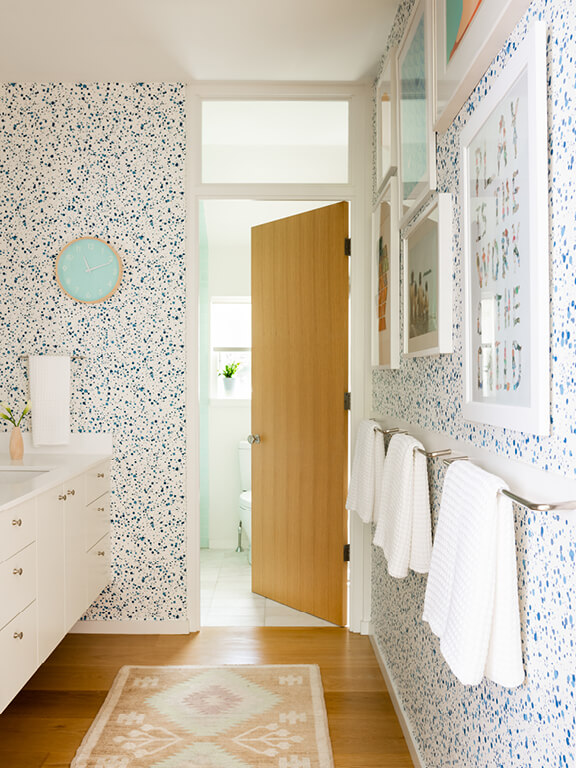


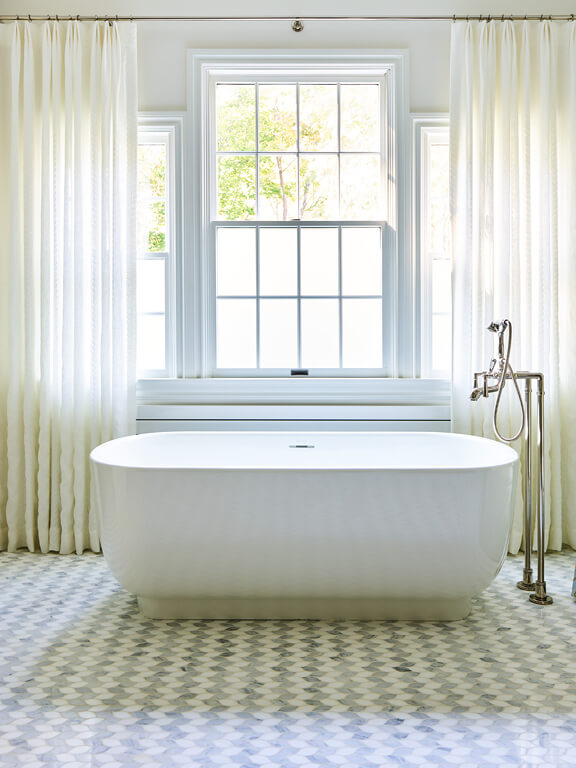
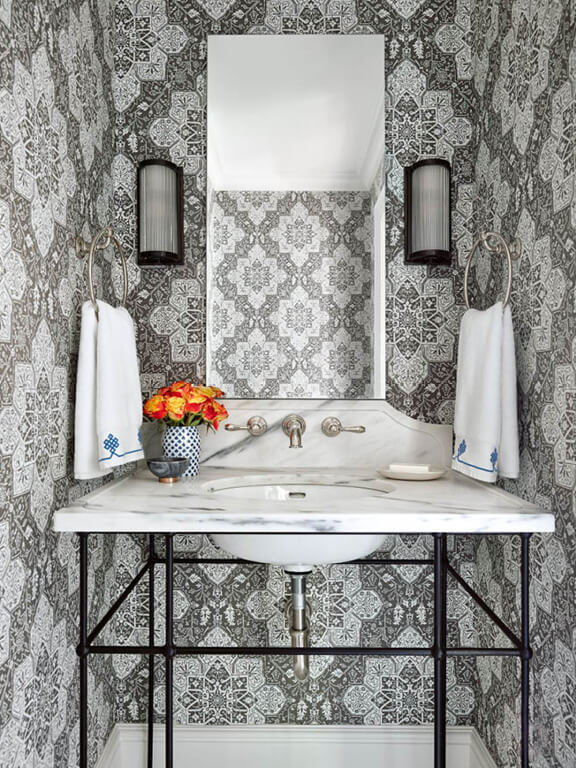
Product by Product: Creating a Cohesive Design
We also organize by product to keep the entire home visually connected. Lighting must flow from room to room. Plumbing fixtures should relate. A modern kitchen next to a traditional bath feels disjointed. That’s why we present lighting in the context of other lighting, paint in the context of other paint, and wallpaper or plumbing fixtures in relation to adjacent selections—so every room feels cohesive and connected. When presenting lighting, we show all fixtures together so clients see relationships at a glance. We apply the same approach to kitchens and baths—grouping tiles, plumbing, and hardware so the big picture stays clear.
Vendor relationships count too. We rely on trusted showrooms and online suppliers who provide strong service and quick problem-solving. During selection we prepare invoices and track costs to keep the budget in line.
Since electricians need rough electrical plans first, we start with lighting. For a Boston brownstone renovation, we chose original-style fixtures that feel built-in. The living room features a central onyx disc light, brass double sconces at the fireplace, and a smaller onyx fixture over a side table. In the rear parlor, a modern brass-and-glass Oly Studio fixture echoes the front room’s shape. Single brass sconces flank the fireplace, creating six unique fixtures with one cohesive story.
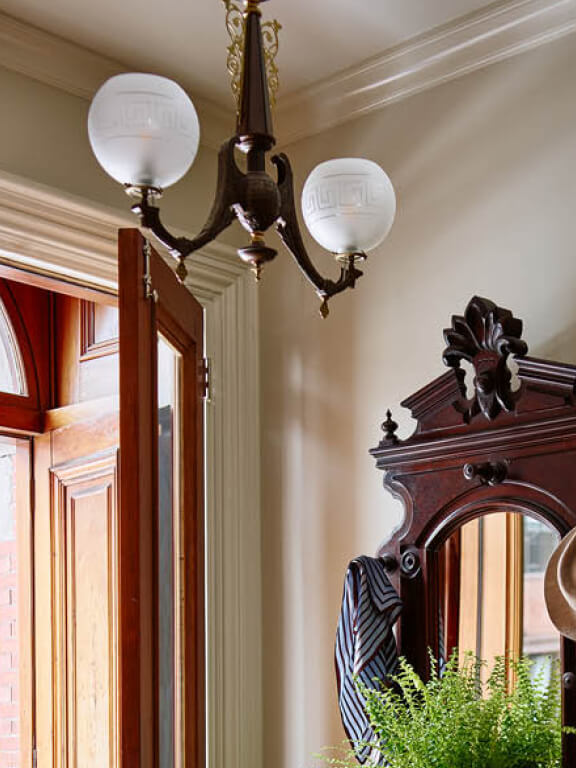

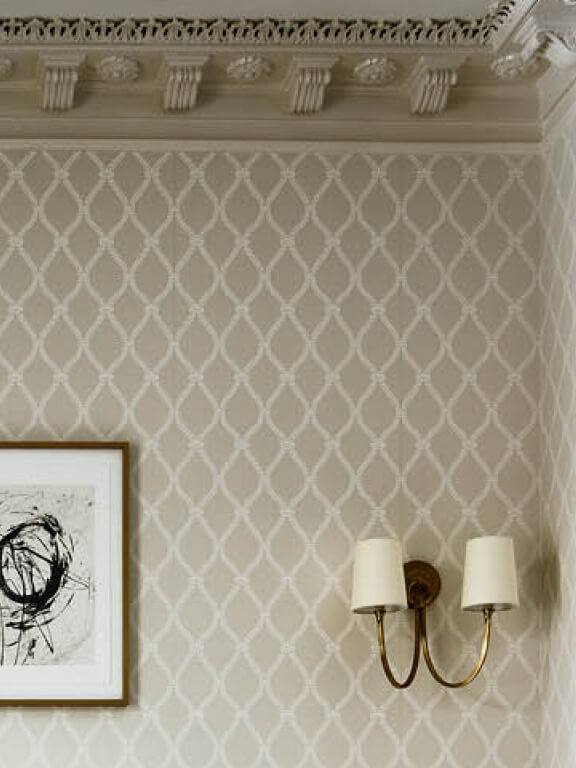
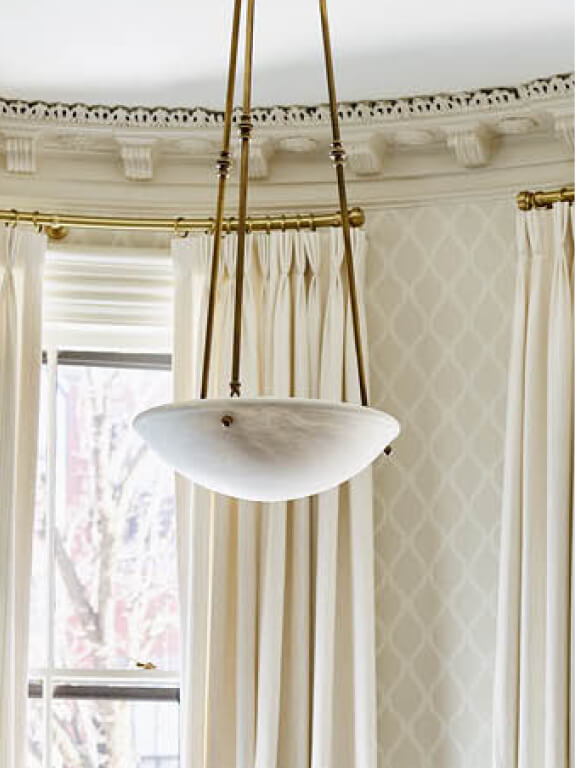
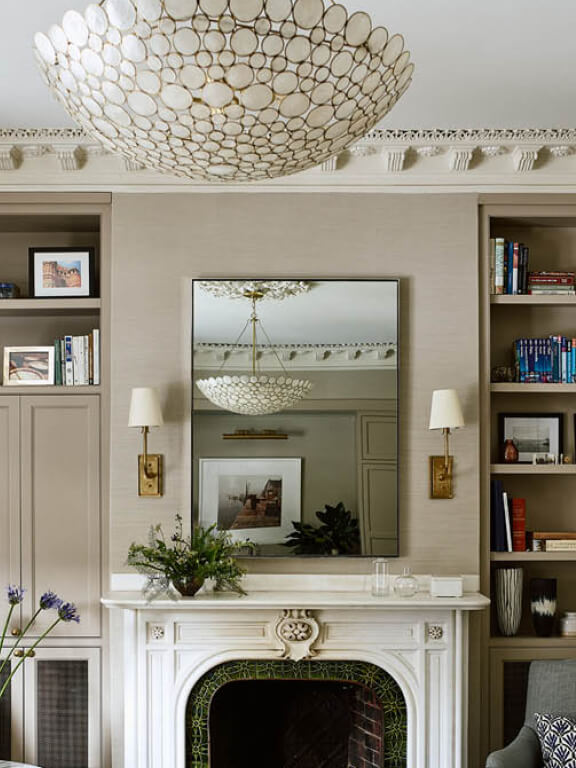
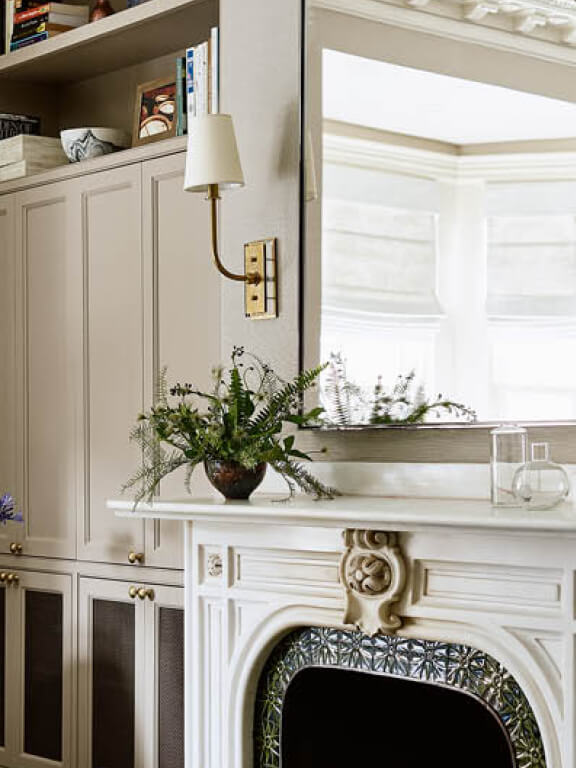
By the Numbers: Tracking Costs and Staying on Budget
Numbers drive decisions. Budgets can overwhelm, but tracking them early prevents expensive mistakes. We weigh every selection against real costs—pricing, taxes, tariffs, shipping, storage, and installation. No item moves forward unless it fits the financial plan. Beautiful design fails if it blows the budget. We research and adjust constantly so the design stays on track.
From Design Development to Procurement: Bringing It All to Life
Design development finalizes every choice and advances drawings into detailed construction documents with notes, fixtures, and finish details. By the end of this phase, all selections are complete, drawings finished, and procurement begins. Procurement turns decisions into reality—placing orders and scheduling deliveries—so builders can install and the project can move to the next layer: design management.